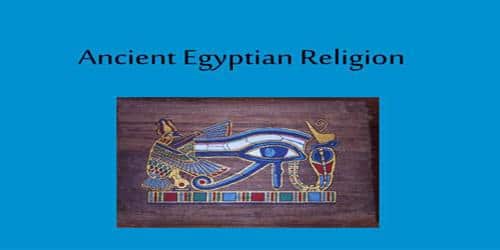Ancient Egyptian religion was a complex system of polytheism and faith, which was an integral part of ancient Egyptian society. The religion of ancient Egypt lasted for more than 3000 years and was multi-religious, meaning that there were many deities who believed that they would live and control the forces of nature. The rulers of Egypt believed that they had acquired divine power because of their rank, a formal religious practice centered on Pharaoh. They acted as mediators between their people and the gods, and they were forced to maintain the gods through rituals and offerings so that they could maintain the order of the Ma’at, the world. Although many survived from prehistoric events, these may be relatively unimportant to understand later, as the Egyptian state created a new context for the established conversion religion.
Individuals could approach the gods for their own purposes, request help through prayer, or force the gods to work in magic. These practices differ from formal customs and companies but are closely involved. The traditional religious practice centered on the Pharaoh or ruler of Egypt acted as a mediator between believers and humans and gods. His role was to sustain the gods so that they could maintain order in the universe. It is unfair to narrowly define religion, as it is only in the religion of the gods and human goodness. Religious behavior involves dead habits such as prophecy and communication with the Oracle and sorcery, which mostly absorb divine sheik instruments and associations. Great efforts to guarantee the survival of their souls after death – The importance of faith and fun practices in the Egyptians’ faith and afterlife is evident by offering tombs, burial supplies and offerings to protect the dead and spirits of the deceased.
The Egyptians were very concerned about the fate of their souls after death. They believed that the (life force) had placed the body on death and they needed to be fed. Or personal spirituality. The goal was to combine ka and or to make sugarcane. Both are one of the most prominent features of Egyptian civilization. The king attained a unique status in humanity and the gods participated in the world of their gods and erected monuments of great religiously inspired fun for his time. Egyptian deities are famous for their various forms, including the forms of animal beings and the forms mixed with the head of an animal in human bodies. At various times, some deities became prominent over others, including Suryadeva Ra, creator deity Amun and mother goddess Isis. For a short time, according to theology introduced by Pharaoh Akhenaten, a single deity replaced the Athenian pantheon. The artistic images of the gods were not literal representations, as their true nature was considered mysterious. However, symbolic images were used to indicate this nature. Ancient Egyptian religions and myths have left behind many ancient works and monuments and significant influences from ancient and modern cultures.















